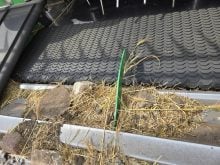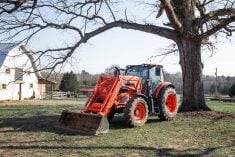FARGO, N.D. – Besides being quiet enough to sneak up on Santa, electric-powered all-terrain vehicles are taking some of the noise out of farming.
Battery-powered ATVs from Bad Boy Buggies in Grand Forks, North Dakota, are intended mainly for hunters, but farmers have also started buying the silent machines.
The two models – the Standard and the XT – are full-time four-wheel drive and operate directly from their electric motors without the need for transmissions or gear changes.
The Standard has solid drive axles front and rear, with leaf springs. The XT has independent suspension front and rear, with McPherson struts.
Read Also

Why feds imposed EV tariffs
Moe and Kinew have a fight on their hands when it comes to eliminating the EV tariff. Canada has to worry about pissing off the U.S. and Mexico and hundreds of thousands of auto workers.
The XT boosts a 20 horsepower electric motor at the front differential and another 20 h.p. electric motor at the rear differential. Together, they produce 156 foot-pounds of torque.
The smaller Standard model has 13 h.p. motors front and rear, with 130 foot pounds of torque. Both models have a total load capacity of 1,000 lb., including driver.
Electric motors are known for their ability to produce more working force than internal combustion engines because the fields are compelled to pull harder toward each other as the load increases.
“That’s the case with these motors, too,” said Bad Boy Buggie rep Shawn Dockter.
“The torque and workload are just as good, if not better, than any gas powered ATV I’ve driven. I can throw a moose on the back and haul it back to camp, no problem.”
Operators need to ensure that they don’t let the batteries become depleted.
“You’ve got to keep your range in mind,” Dockter said.
“Range varies from 19 to 30 miles (31 to 40 kilometres). Your range is shorter, of course, if you’re running in heavy brush or mud or up steep hills. Average range is about 26 miles (42 km) in normal conditions. If you keep that in mind, there shouldn’t be any problem.”
The buggy power comes from eight six-volt, deep cycle batteries, wired to produce 48 volts DC. The built-in charging system needs six to eight hours for a full recharge. Both models have regenerative braking, which feeds electricity back into the batteries when drivers slow down.
“We don’t have any memory problems. You can fully charge anytime, from any state of charge. No need to drain them down to get a full charge,” Dockter said.
“And you can leave it plugged in for a year or longer. The system automatically knows when to charge and not charge.”
The solid axle Standard sells for $10,500 US. The new XT with fully independent suspension sells for $12,500.
For more information, call Dockter at 701-775-3191 or visit www.dakota-outdoors.com.















